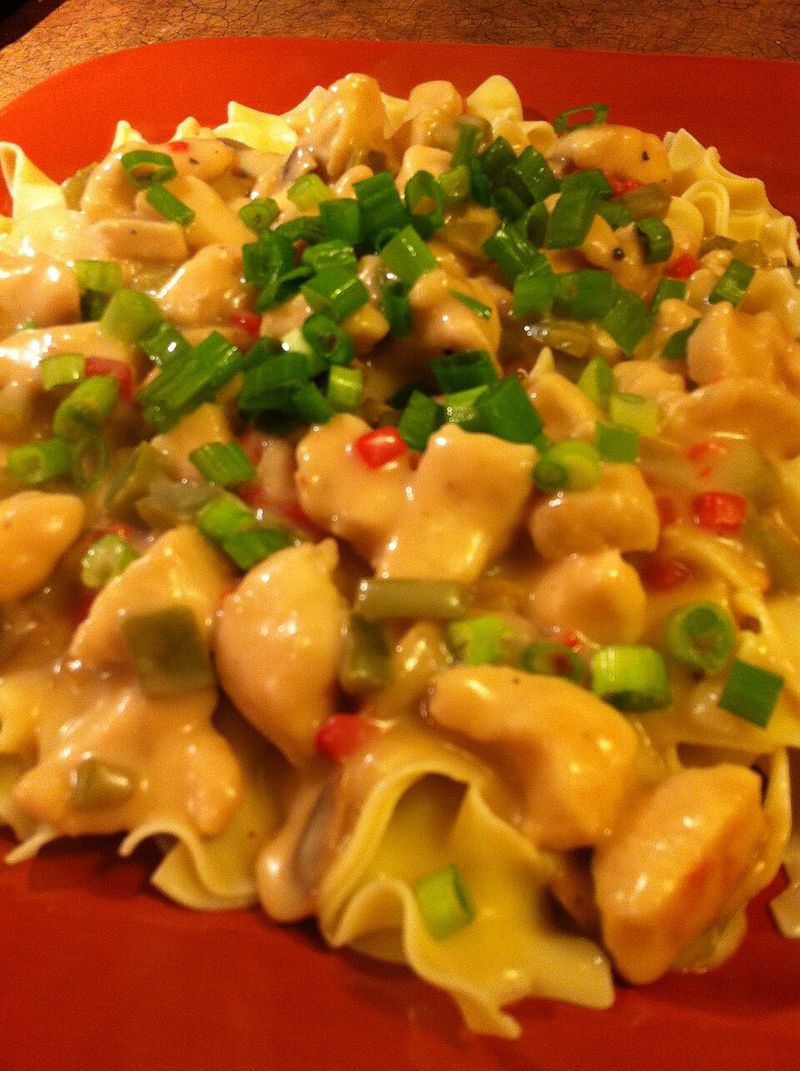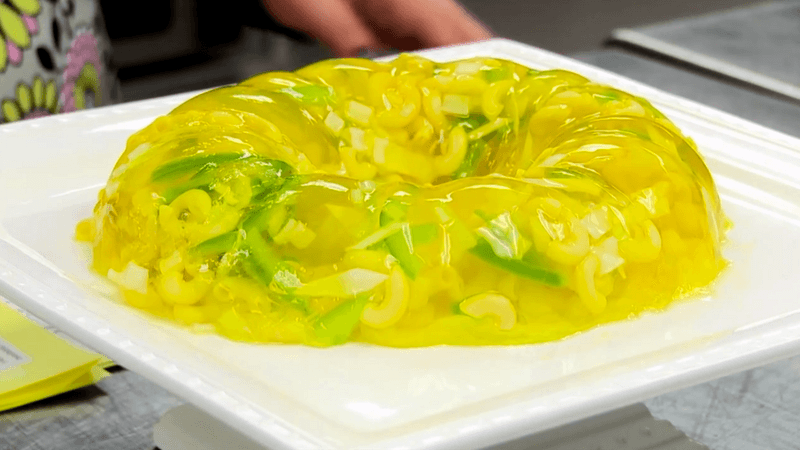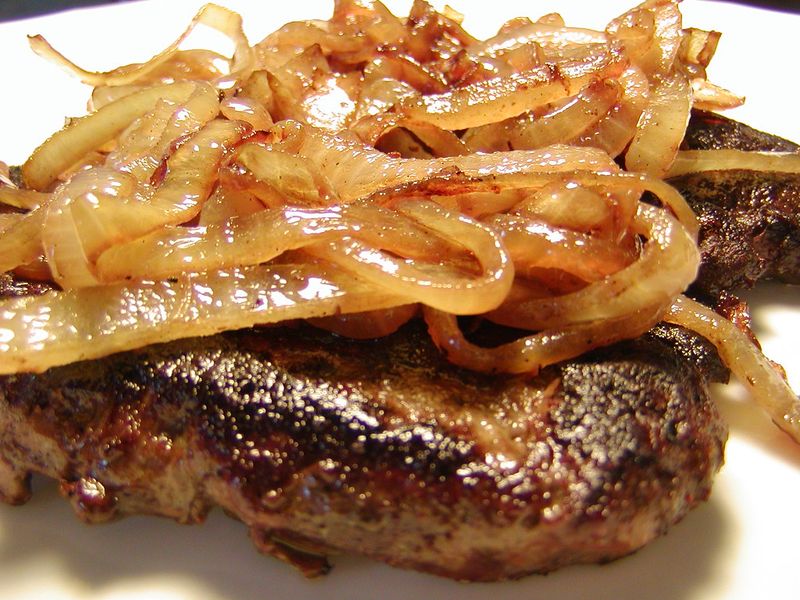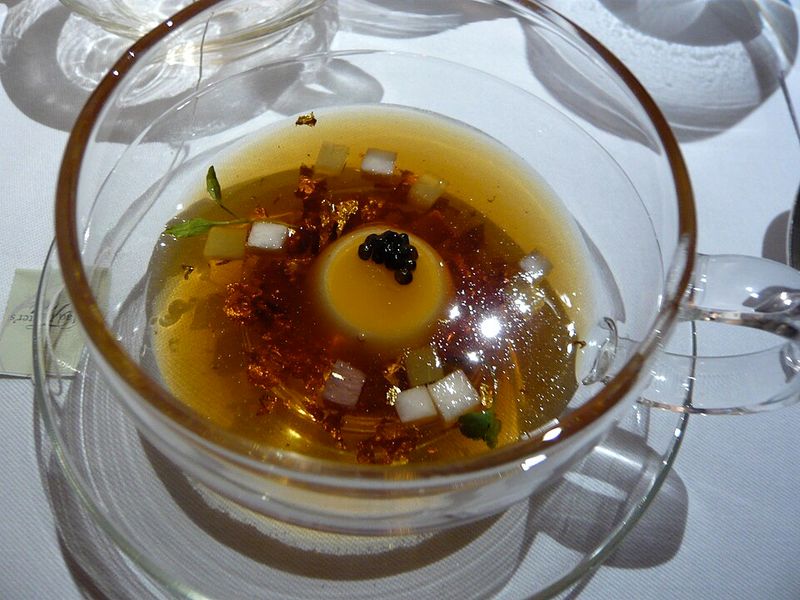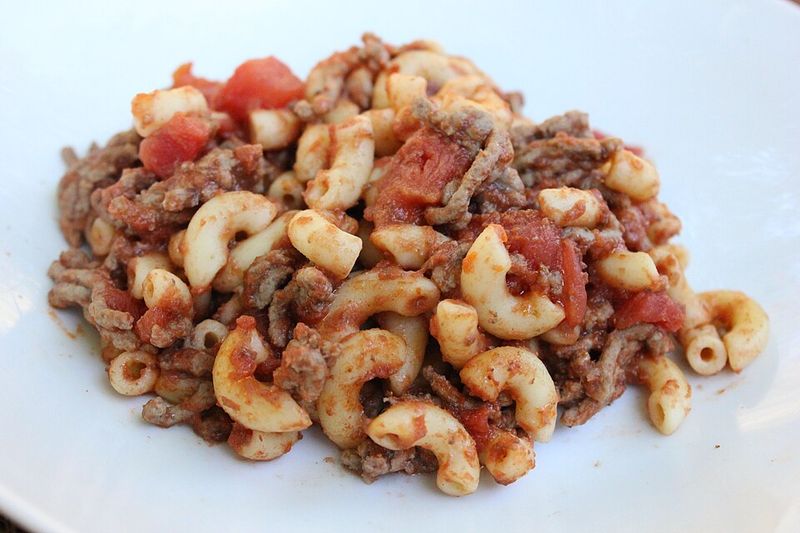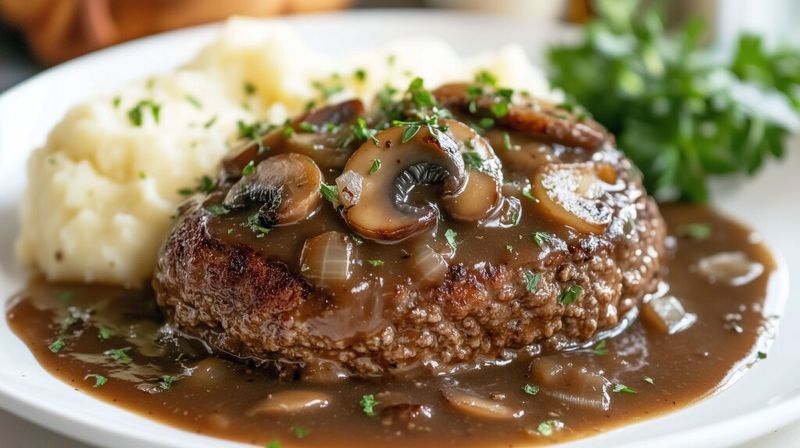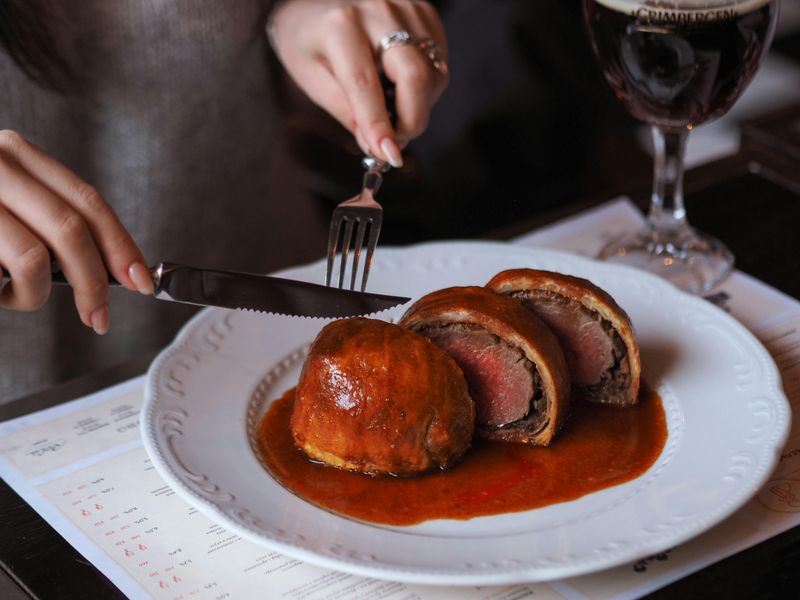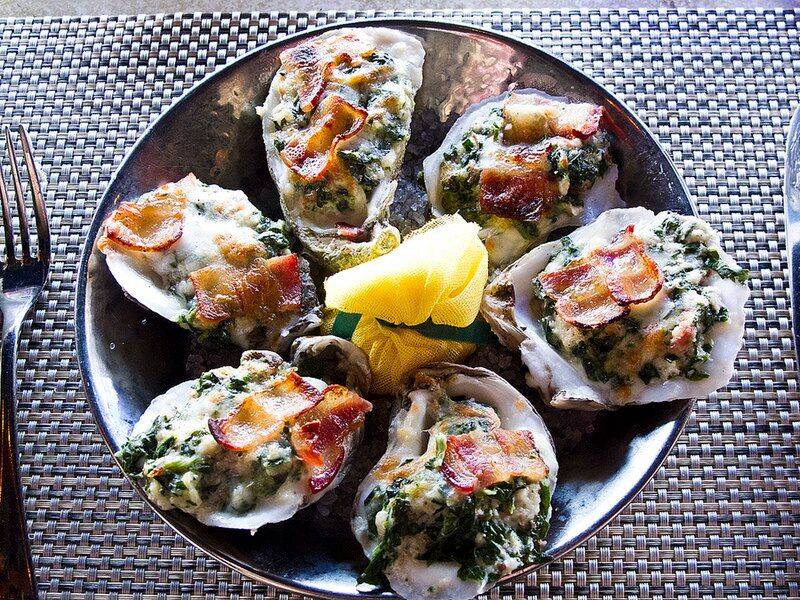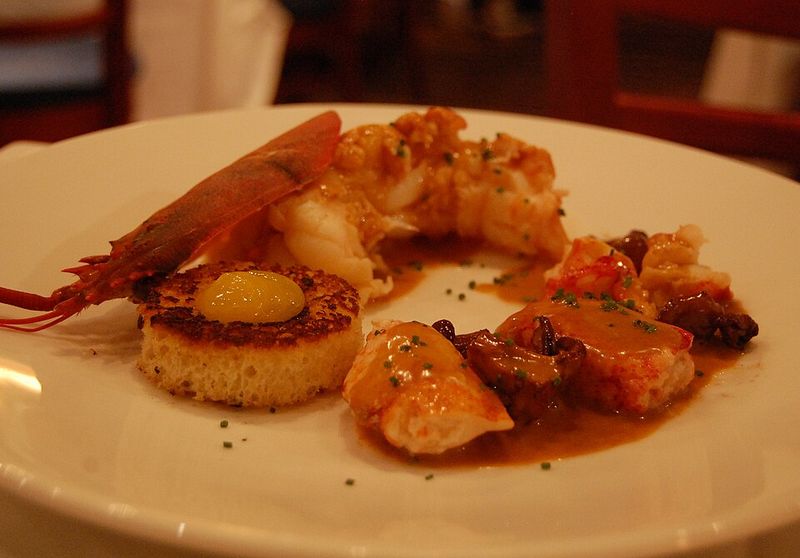Across America, once-beloved dishes are slipping from menus and memories, replaced by lighter trends and global flavors. Yet these plates tell stories of hotel dining rooms, church potlucks, and weekday suppers that shaped how the nation ate. If you’ve ever wondered what fell off the table and why, this tour through retro staples explains the rise, shine, and quiet fade of a culinary era. Read on to rediscover the nostalgia, the techniques, and the surprising reasons these dishes nearly vanished.
1. Chicken à la King
Chicken à la King once signaled hotel polish and mid-century comfort, pairing tender chicken with mushrooms and peppers in a velvety cream sauce. Served over toast points, puff pastry, or rice, it felt celebratory yet familiar, ideal for luncheonettes and banquet menus. The dish demanded careful sautéing and reduction to achieve its lush consistency and sheen. As tastes tilted toward lighter fare and streamlined plating, its richness grew unfashionable and its labor hard to justify. Still, one bite evokes white tablecloths, silver coffee service, and the era when a creamy sauce could define a restaurant’s style.
2. Jell‑O Salad (Gelatin Moulds)
Jell‑O salad reigned at family suppers and church basements, a shimmering canvas for fruit, nuts, cream cheese, or even vegetables. Molded in rings, domes, and cathedral shapes, it promised spectacle and convenience in equal measure. The wobbly texture signaled celebration, while canned pantry staples kept costs friendly. As fresh produce and minimally processed ingredients took center stage, gelatin molds began to feel kitschy and dated. Yet their engineering is impressive: layered suspensions, careful chilling, and dramatic releases from ornate molds. Today, a revival flickers among retro enthusiasts, who prize the playful visuals and communal nostalgia.
3. Liver and Onions
Liver and onions once anchored weekday dinners with iron-rich thrift and straightforward technique. Quick searing kept the liver tender, while deeply caramelized onions added sweetness to balance its mineral bite. Many grew up with it on the stove, a practical answer to budget and nutrition. Over time, organ meats fell from mainstream favor, eclipsed by leaner cuts and milder flavors. Yet prepared precisely, it’s undeniably delicious: silky centers, browned edges, and a pan sauce deglazed with stock or vinegar. Nostalgia aside, this dish showcases a nose-to-tail ethic modern cooks increasingly appreciate.
4. Mock Turtle Soup
Mock turtle soup arose when real turtle became dear, substituting calf’s head, veal, or offal to mimic the famed luxury. Richly spiced and fortified with sherry, it carried a deep, gelatinous body and a hint of sweetness from long simmering. Once common in hotel dining rooms and club menus, it reflected both resourcefulness and aspiration. Modern tastes shy from off-cuts and protracted preparation, and true turtle dishes declined for ethical and legal reasons. Still, the soup’s technique—clarifying, spicing, and balancing acidity—reveals the era’s culinary craft and the American knack for adaptation.
5. Chopped Suey / American Chop Suey
Chopped suey and its New England cousin American chop suey once fed cafeterias, diners, and families with dependable comfort. One offered a Chinese-American stir-fry of pork, celery, and sprouts in savory sauce; the other married macaroni, ground beef, and tomato into goulash-like ease. Both delivered value, speed, and familiarity. As culinary conversations shifted toward regional specificity and authenticity, their catchall names lost luster. Yet their rhythms—batch cooking, pantry staples, and weeknight adaptability—remain instructive. They testify to immigrant ingenuity and the American table’s craving for hearty, crowd-pleasing bowls.
6. Salisbury Steak
Salisbury steak promised steakhouse vibes on a budget, shaping seasoned ground beef into a patty and bathing it in onion-mushroom gravy. Paired with mashed potatoes, it defined diner comfort and freezer-aisle convenience. Over time, gourmet burgers, premium beef cuts, and wellness concerns overshadowed it, and gravy-heavy plates lost cachet. Still, the technique shines when treated with care: pan deglazing, proper sear, and stock reduction. A well-made version tastes deeply beefy and satisfying without pretense. In an age of nostalgia, it may yet reclaim a corner of the comfort-food canon.
7. Beef Wellington
Beef Wellington once dominated celebratory menus, a showpiece of technical prowess and luxury. A fillet swaddled in pâté and mushroom duxelles, wrapped in puff pastry, demanded chilling, precise timing, and confident carving. As dining tilted toward minimalism and à la carte flexibility, its labor and risk felt impractical. Yet nothing rivals the reveal of a perfect cross-section—crisp pastry, rosy center, and concentrated mushroom perfume. The dish encapsulates mid-century hotel glamour and the chefly emphasis on spectacle. In capable hands, it remains irresistible, if increasingly reserved for holidays and tasting-menu callbacks.
8. Baked Alaska
Baked Alaska brought theater to dessert, hiding chilled ice cream inside cake and insulating it with meringue toasted or flambéed tableside. Its success relied on temperature control, timing, and spectacle. As insurance, training, and cost concerns reduced tableside flames, and diners favored simpler finales, the dish slipped into rarity. Still, its contrast of hot and cold, crisp and creamy, is magical. Pastry chefs occasionally revive it as petite portions or modernized flavors. When executed properly, it turns a meal into a memory, the room hushed by blue fire’s brief glow.
9. Oysters Rockefeller
Oysters Rockefeller epitomized Gilded Age indulgence, half-shells cloaked in a rich, emerald herb-butter sauce and broiled to a delicate crust. The dish’s secrecy and drama captivated diners for decades. Rising oyster prices, sustainability questions, and shifting fine-dining tastes nudged it aside in favor of raw bars and lighter preparations. Yet the aroma of anise, spinach-like greens, and butter remains intoxicating. Cooked just right, the oyster keeps its briny snap beneath a velvety topping. It’s a postcard from opulent dining rooms where tuxedoed servers ferried sizzling platters on beds of salt.
10. Shrimp Newburg
Shrimp Newburg offers velvet richness: butter, cream, and sherry emulsified into a sauce that lovingly coats tender shellfish. Born in grand American restaurants, it communicated indulgence and ceremony. Contemporary dining’s lighter sensibilities, plus the cost of quality seafood, pushed it off everyday menus. Still, the emulsion’s balance of heat, alcohol, and dairy is a technical gem, and puff pastry shells add crisp contrast. When executed with restraint, it feels elegant rather than heavy. It recalls an era when saucework was a restaurant’s signature and a waiter’s pour could define the experience.
11. Ham Salad Spread
Ham salad spread thrived in delis and home kitchens, transforming leftover ham into a tangy, creamy sandwich filling. Chopped or ground, it folded in mayo, pickle relish, celery, and mustard for zip and crunch. Packed in lunchboxes or perched on crackers, it supplied frugal convenience with personality. As processed meats lost favor and fresher sandwich options expanded, it quietly receded. Yet it remains a smart template for repurposing roasts, and its balance of salt, sweet, and acidity holds appeal. For many, one bite summons family gatherings and church socials.
12. Tomato Aspic
Tomato aspic once signaled sophistication, a savory gelatin molded from seasoned tomato juice and set with herbs or vegetables. Served sliced with mayonnaise or seafood salad, it offered a cool counterpoint to rich entrées. As tastes moved away from gelatinous textures and formal presentations, aspic seemed stilted and old-fashioned. Still, its clarity, seasoning, and structural finesse reveal classic technique. With careful bloom, precise seasoning, and a pristine mold, the result is striking. It’s a relic of dinner parties where presentation mattered as much as flavor, and the buffet shimmered like stained glass.

